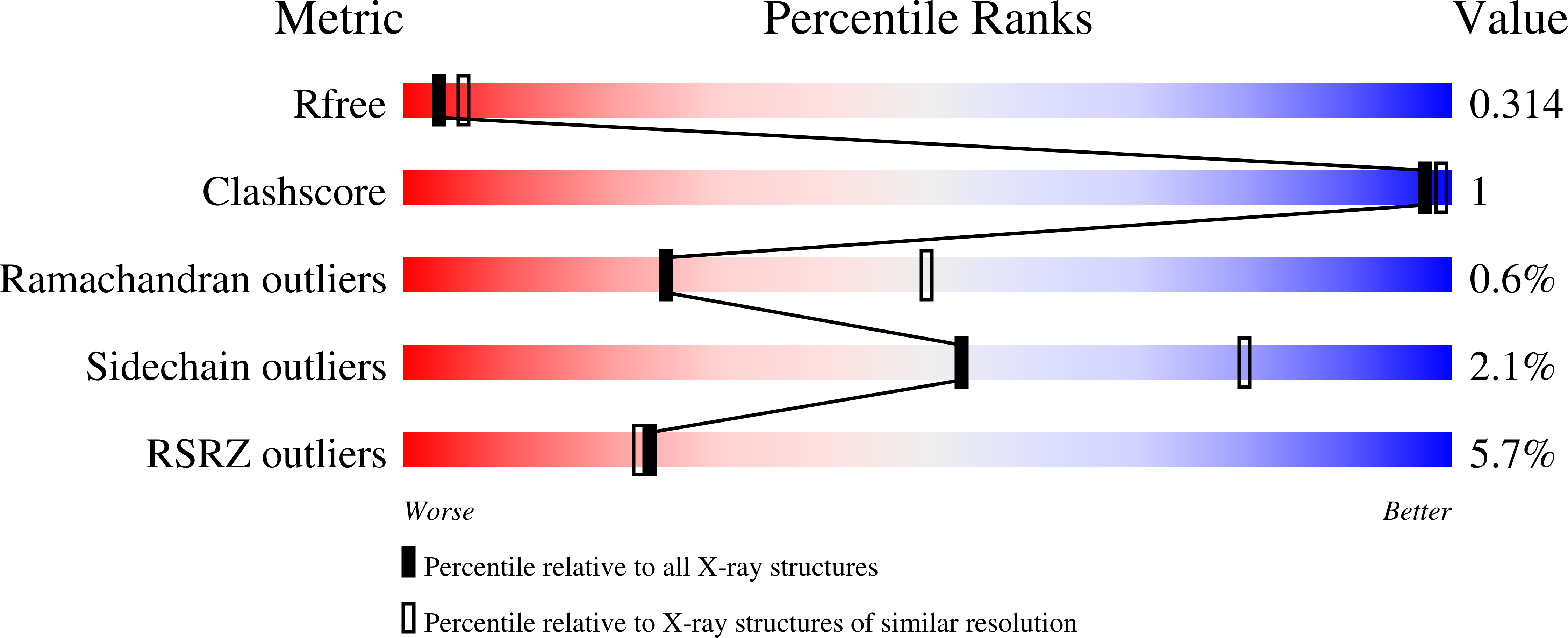Discovery of Potent, Selective, and Orally Bioavailable Inhibitors of USP7 with In Vivo Antitumor Activity.
Leger, P.R., Hu, D.X., Biannic, B., Bui, M., Han, X., Karbarz, E., Maung, J., Okano, A., Osipov, M., Shibuya, G.M., Young, K., Higgs, C., Abraham, B., Bradford, D., Cho, C., Colas, C., Jacobson, S., Ohol, Y.M., Pookot, D., Rana, P., Sanchez, J., Shah, N., Sun, M., Wong, S., Brockstedt, D.G., Kassner, P.D., Schwarz, J.B., Wustrow, D.J.(2020) J Med Chem 63: 5398-5420
- PubMed: 32302140
- DOI: https://doi.org/10.1021/acs.jmedchem.0c00245
- Primary Citation of Related Structures:
6VN2, 6VN3, 6VN4, 6VN5, 6VN6 - PubMed Abstract:
USP7 is a promising target for cancer therapy as its inhibition is expected to decrease function of oncogenes, increase tumor suppressor function, and enhance immune function. Using a structure-based drug design strategy, a new class of reversible USP7 inhibitors has been identified that is highly potent in biochemical and cellular assays and extremely selective for USP7 over other deubiquitinases. The succinimide was identified as a key potency-driving motif, forming two strong hydrogen bonds to the allosteric pocket of USP7. Redesign of an initial benzofuran-amide scaffold yielded a simplified ether series of inhibitors, utilizing acyclic conformational control to achieve proper amine placement. Further improvements were realized upon replacing the ether-linked amines with carbon-linked morpholines, a modification motivated by free energy perturbation (FEP+) calculations. This led to the discovery of compound 41 , a highly potent, selective, and orally bioavailable USP7 inhibitor. In xenograft studies, compound 41 demonstrated tumor growth inhibition in both p53 wildtype and p53 mutant cancer cell lines, demonstrating that USP7 inhibitors can suppress tumor growth through multiple different pathways.
Organizational Affiliation:
RAPT Therapeutics, Inc., 561 Eccles Avenue, South San Francisco, California 94080, United States.


















